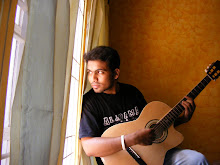1) Parent
2) Child (Janyam)
There are two important things to remember when it comes to any raga.
1)Aaroganam - In any octave, aaroganam is the set of swaras(sa,ri,ga..) sung from the first to the last note. (ascending)
2)Avaroganam- In any octave, avaroganam is the set of swaras(sa,ri,ga..) sung from the last to first note.(decending)
Parent ragas:
A parent raga is the one which has 7 swaras in aaroganam and seven swaras in avaroganam in ORDER, i.e, Sa,Ri,Ga,Ma,Pa,Da,Ni,Sa.. in aaroganam and vice versa. The following pic shows it..

There are 12 swaras totally in any octave. Every swaras are two in number like R1,R2,G1,G2 etc.. except for 'Sa' and 'Pa'. Since a parent raga needs only 7 swaras in order, either of the two swaras is taken forming a unique raga. It is actually a permutation combination. Taking only 7 swaras from the existing 12. For Eg, this becomes a Parent raga, "Sa,R1,G2,M1,Pa,D1,N2". This is the aaroganam of the raga and the avaaroganam will be the descending order of the same swaras. this particular raga is called "Mayamalavagowlai".
If we do the permutation and combination on the 12 existing swaras with Sa and Pa common for all the parent ragas, we will get a total of 72 unique parent ragas. They are divided as 36 and 36. The first 36 parent ragas will have M1 and the rest 36 will have M2.
Thus the parent ragas.
Child/janya raga:
Consider Parent ragas as 72 super sets. Child ragas as the name says are the sub sets of the parent ragas. There are 7 unique set of swaras in each parent ragas. Imagine the number of sub sets which could be formed from each one of them. There are N number of Janya ragas. but only a very few are being practised and sung.
For eg, If we consider a Parent raga(Kalyani) with Aaaroganam/avaroganam:
"Sa,R2,G2,M2,Pa,D2,N2,Sa...."
This(Mohanam) will be a child for the parent.
Aaroga..: "Sa,R2,G2,Pa,D2,Sa" Avaroga..: "Sa.,D2,Pa,G2,R2,Sa"
Also ragas which have swaras repeating in aaroganam and avaroganam are considered as child ragas. These ragas will have more swaras than the Parent raga itself.
Eg : Aaroga : "Sa,R1,G2,M2,Pa,D2,N1,Sa." Avaro : "Sa.,N2,D2,D1,Pa,M2,G2,R1,Sa"
If you see the above example, there are totally 8 swaras in the avaroganam and also it is different from the swaras in its aaroganam. Point is, these types even though they have more than 7 swaras, are considered to be child ragas!
Once a raga is decided for a composition, the composer plays the tune with the swaras, shows his creativity in those swaras of that particular raga and composes the song. Have you ever wondered why two songs sound similiar? Yes you are right, the songs which you thought were alike might be of the same raga. The composer also has to take care of the tempo through out the song!
Happy Composing! :)

